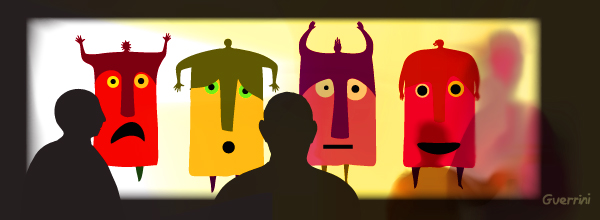The social life of posters is like that of the theater.
For its part, the theater is seen in terms of a relationship, as you always are with others whether they are colleagues or spectators.
The theater is tied to the present. It is an art of the present because the ethereal or ephemera of its life depends on the moment of credibility that the viewer is prepared to place in the play.
The play needs the involvement of the viewer’s attention in a set time, ie that the viewers let themselves be guided by the work, by the story that is told. The result of this is that the magic of being absorbed in the theatrical can always be broken.
This relationship provides no comfort nor can be it be mastered because reality, from someone coughing or speaking, may appear, thus destroying the magic that had been created. This fragility and effort that people in theater and spectators contribute to sustain the credibility and charm of the play is what characterizes this art.
Also the idea of theater can be understood as an intermediate space, where a joining processing occurs between stage and spectator. That transformation is the result of exploration that the viewer makes through the possibilities planted by the theater. This takes place through an exploration of the themes, gestures and actions that are represented, the messages that the work leaves and even through the examples of possible lives of those actors that you see in the distance.
Something similar happens with the materiality of the place where it happens, the theater itself. In this sense, the theater needs a geography and visibility in the territory of the live of the viewers. It requires a physical location within their environment, which makes the theater part of the mental map of the significant things in their lives. This is a map that one can follow or not, but that exists, that is real. On this map, one can always return to the theater in search of new worlds and exploration.
With posters quite the same thing happens:
A poster also creates a meaningful relationship if there is a beholder. For this reason, a poster desperately needs the involvement and the credibility of the viewer to express itself. It needs to stop the viewer to contemplate and understand it, to find the meaning of what is printed in that role. As such the poster also needs to create a magical moment to enter the life of someone who looks at it.
A poster marks the territory of the life of the viewer. The poster, its subject and who portrays that subject mark the way and intrude in the world of the passerby with its presence, its argument, its gaze or its voice. The poster is also real, and even though it may be broken or clogged, it leaves the witness and physical traces of its existence on the wall or bulletin board or from its ashes.
In summary, both the theater and the poster are fragile, but both can achieve magic.
©Sebastian Guerrini, 2009








